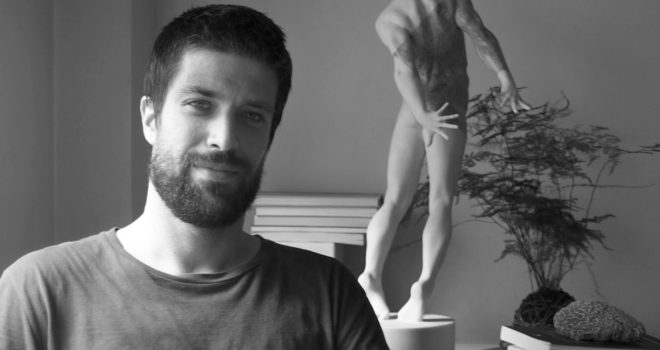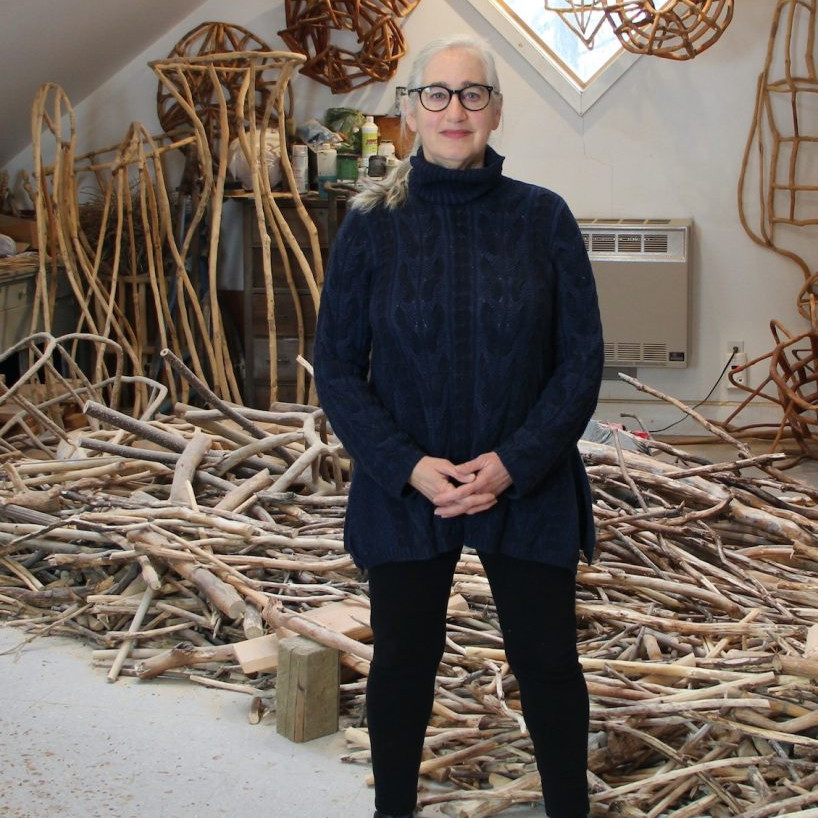César Orrico Sculptor - La Rioja, Spain
When did you first combine wood into your sculptures?
I have always been interested in research on the different materials applied to sculpture. During my career in Fine Arts I was very motivated to know the qualities offered by each material and is when I started experimenting with wood and the fusion with other elements such as artificial stone, iron or bronze. In my work I like to mix opposite characteristics, blending cool and warm materials.
In Gea you use the term ‘artificial stone’ what do you mean by this?
Artificial stone is a polymer with different stone grains. It is a material widely used in the field of restoration of sculptures by its resemblance to the stone since its characteristics are almost identical. It is a hard but fragile material at the same time, like stone. Has the same texture when it’s cold is cold to the touch and hot weather is warm. It is a material with which I am very comfortable working as it gives me a great level of detail.
What lead you from using wood as part of the bust and plinth in Edith and Hikari while in Gea the wood has become a major function?
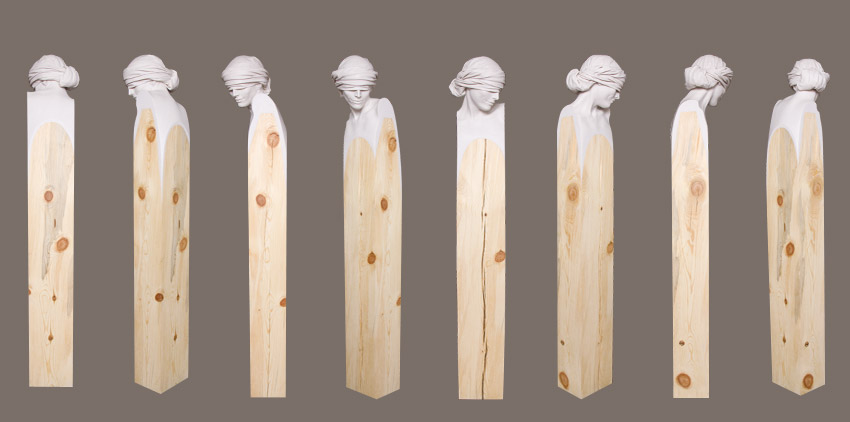 Edith, Artificial Stone, Iron and Wood, 180 x40 x40cm
Edith, Artificial Stone, Iron and Wood, 180 x40 x40cm
In Edith the wood does not work simply as a plinth, is a synthesising of the body. In that case the wood also has its role. I select very carefully each piece of wood I use for each sculpture because the cracks, knots and forms, accompany and enhance the figure.
In Hikari, in addition to having this in mind, the wood not only functions as a synthesizing of the body, but also reduces to a few lines, which would be a kimono. With this in mind, Gea becomes the same as in Hikari, a representation in formal lines of a hat as a synthesis of part of its iconography.
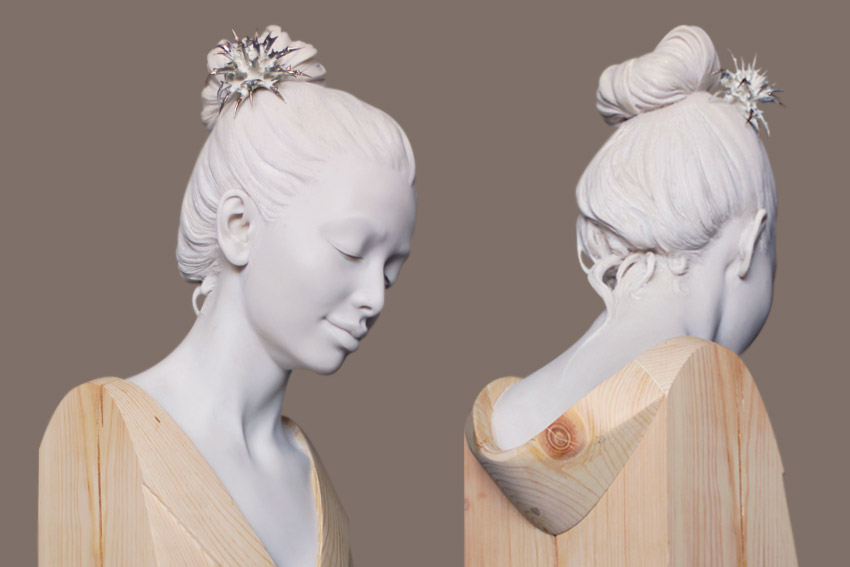 Hikari, Artificial stone, Iron and Wood, 180 x 40 x 40cm
Hikari, Artificial stone, Iron and Wood, 180 x 40 x 40cm
Edith. Who is Edith?
Edith is the wife of Lot, a patriarch in the biblical Book of Genesis, which in his flight from the destruction of Sodom and Gomorrah, was warned not to look back and moved away from the city with his wife and daughters. During the flight, Edith could not help looking back and she became a pillar of salt.
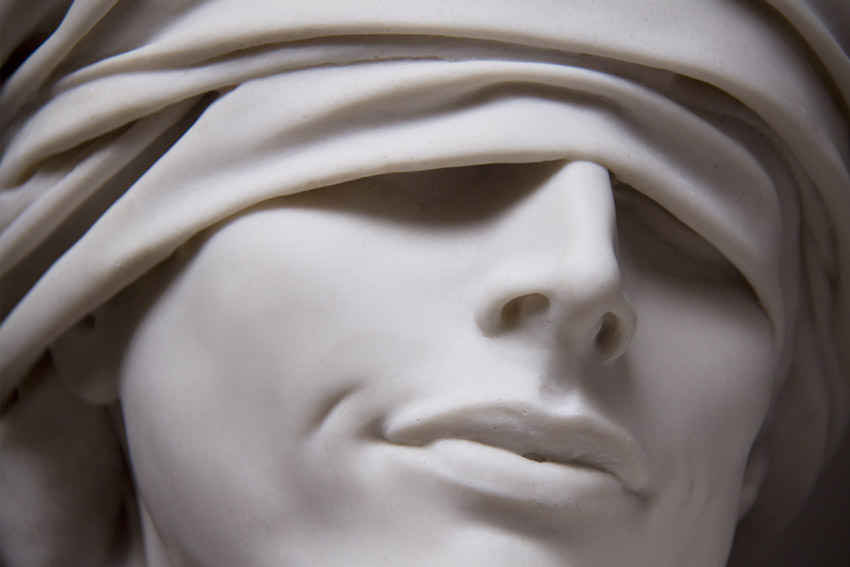 Edith, Artificial Stone, Iron and Wood, 180 x 40 x 8cm
Edith, Artificial Stone, Iron and Wood, 180 x 40 x 8cm
Discuss the tactile qualities of this work
Edith like other of my works made with the same materials has the quality of being very soft to the touch. The finish of this part of the sculpture is extremely thin and polished as marble. This contrasts nicely with the touch that offers the wood, where you can see the cracks and imperfections of this beautiful material.
Why are her eyes hidden?
In this sculpture we are offered a challenging and provocative Edith looks back through a veil avoiding becoming a pillar of salt. It is a personal interpretation of history.
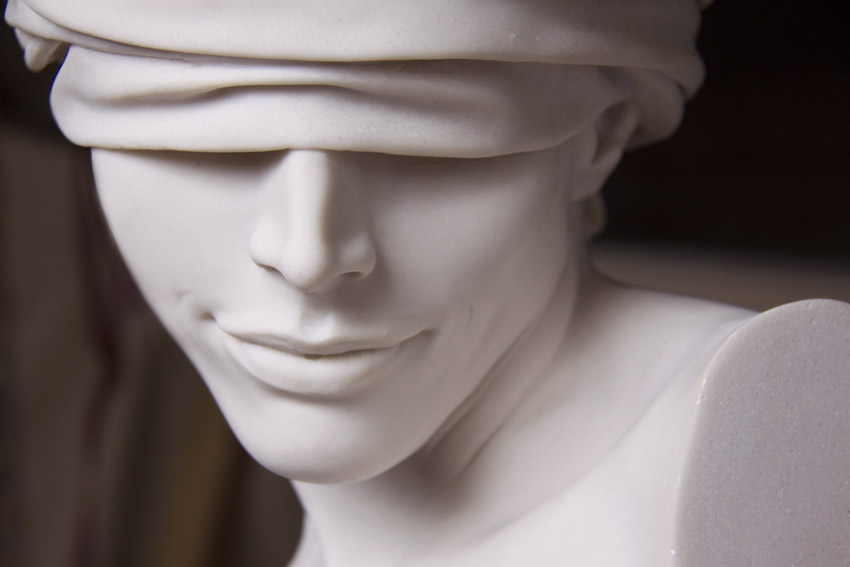 Edith, Artificial Stone, Iron and Wood, 180 x 40 x 8cm
Edith, Artificial Stone, Iron and Wood, 180 x 40 x 8cm
Discuss the complexity of sculpturing cloth.
Fabrics, clothes and folds in the sculptures always have much complexity as they work almost as organic volumes, which must fit perfectly and bring to figure balance and beauty.
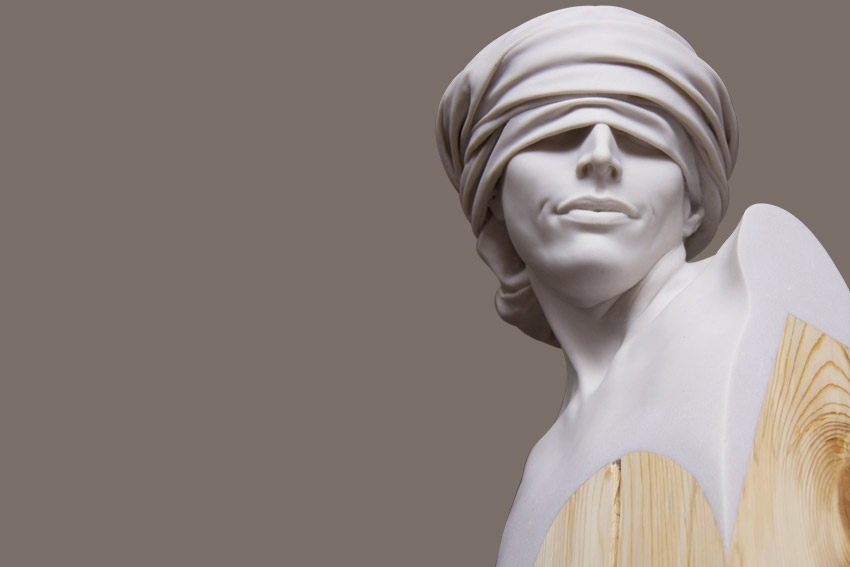 Edith, Artificial Stone, Iron and Wood, 180 x 40 x 8cm
Edith, Artificial Stone, Iron and Wood, 180 x 40 x 8cm
How heavy is Edith?
Approximately 80 kilograms.
Where can we find her?
Edith is now in the hands of private collectors and some galleries with which I work, as Galerie Calderone (France).
CÉSAR ORRICO.Edith – YouTube
Proceso creativo de la escultura Edith del artista César Orrico.
Giro is completely out of Cherry wood discuss this departure in your current work?
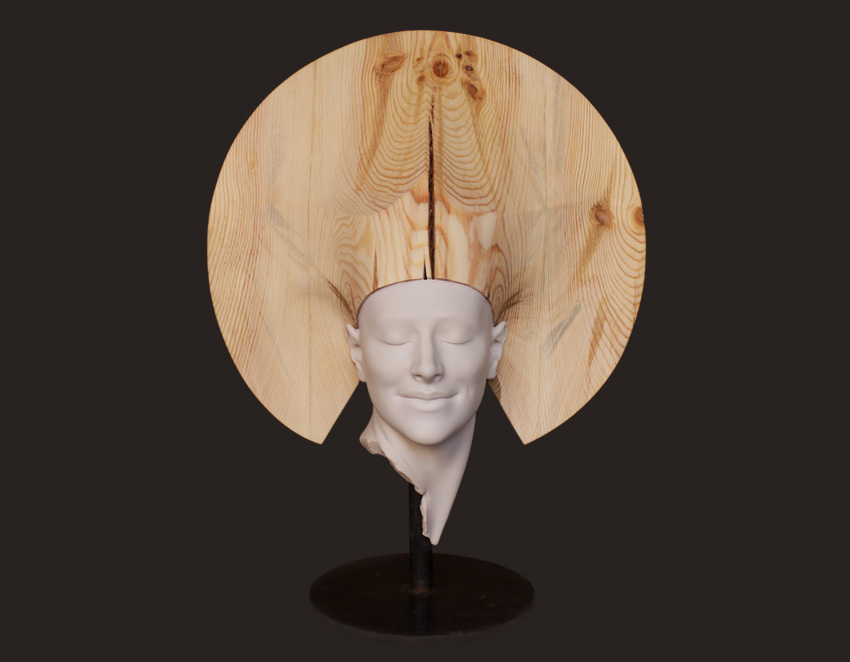 Geo, Artificial Stone, Iron and Wood 60 x 46, 40cm
Geo, Artificial Stone, Iron and Wood 60 x 46, 40cm
I have created works only in wood, such as Ingrávido, as woodcarving is also a fundamental part of my job. Giro in cherry wood, corresponds to an artist proof who is part of an edition of 8 original and 4 artist’s proofs, which is formed by pieces of different materials such as bronze, artificial stone or aluminium. As I said before, my work is closely related to research and fusion between materials, therefore my sculptures are always evolving.
How many sculptures can you produce per year? Or is it dependent on commissions or exhibitions?
My creative process is slow, I’m a very meticulous person and I like to work out the details. Obviously, the number of exhibitions and commissions influences my production. I could not give an exact number because production depends on many factors such as the complexity of the work, size, etc.
With Atlas how many editions did / have you cast?
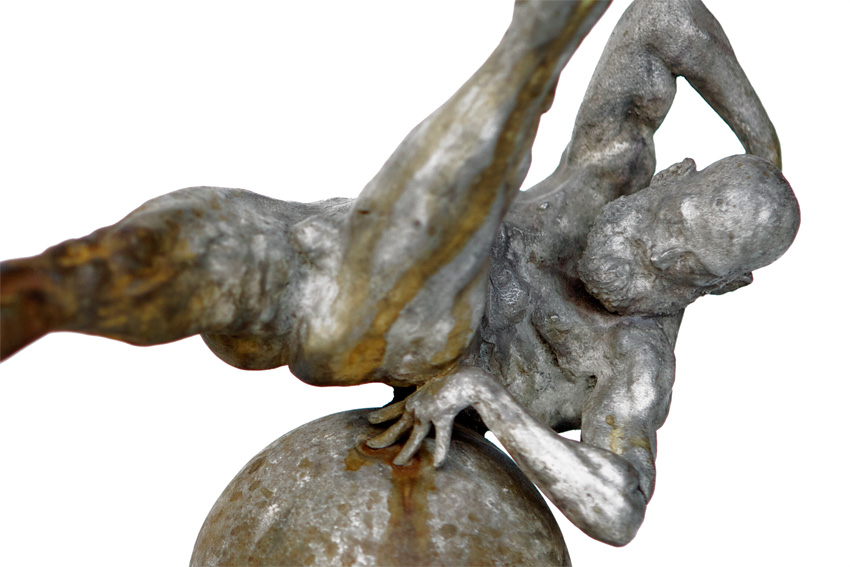 Atlas, Bronze, 15 x 22 x 10cm
Atlas, Bronze, 15 x 22 x 10cm
Atlas belongs to an edition of 8 original and 4 artist’s proofs. For this sculpture to be made of bronze by the process of lost wax smelting, I use cast. Like most of the pieces I make with these features, there are parts of the sculpture that I have to model again whenever founded a piece of the series, such as hands. The process of casting bronze sculptures such delicate is very complex since the exact temperature to properly register each of its parts is needed.
 Atlas, detail, Bronze, 15 x 22 x 10cm
Atlas, detail, Bronze, 15 x 22 x 10cm
What do you do with your used casts?
Once I have produced all the sculptures of the edition, the cast is destroyed. My sculptures has a limited number that in no case be exceeded.
Was your 2012 ‘Baco’ the piece that lead you to wood? Discuss the wood like form that he is emerging from.
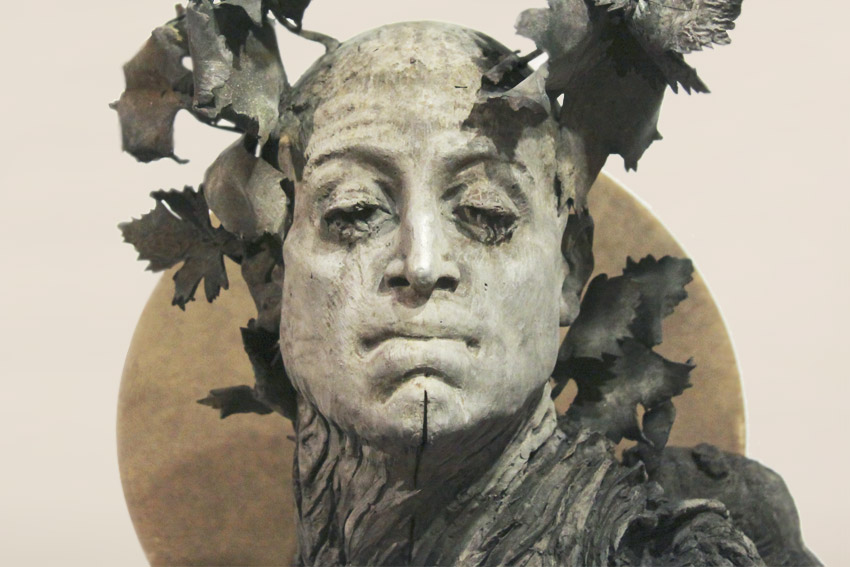 Baco, Iron and Bronze, 80 x35 x 35cm
Baco, Iron and Bronze, 80 x35 x 35cm
Baco is a sculpture made entirely of bronze, although the bottom simulates the wood of a vine.
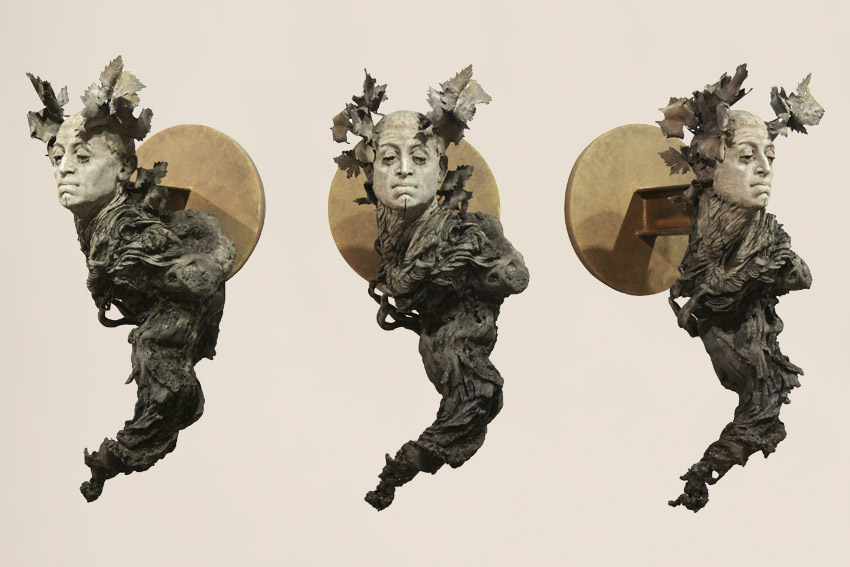 Baco, Iron and Bronze, 80 x35 x 35cm
Baco, Iron and Bronze, 80 x35 x 35cm
This form corresponds to the iconography of the god Baco (god of the grape harvest and wine) so it emerges from the plant that produces the grapes. The use of wood and the combination of different materials is much earlier than this sculpture.
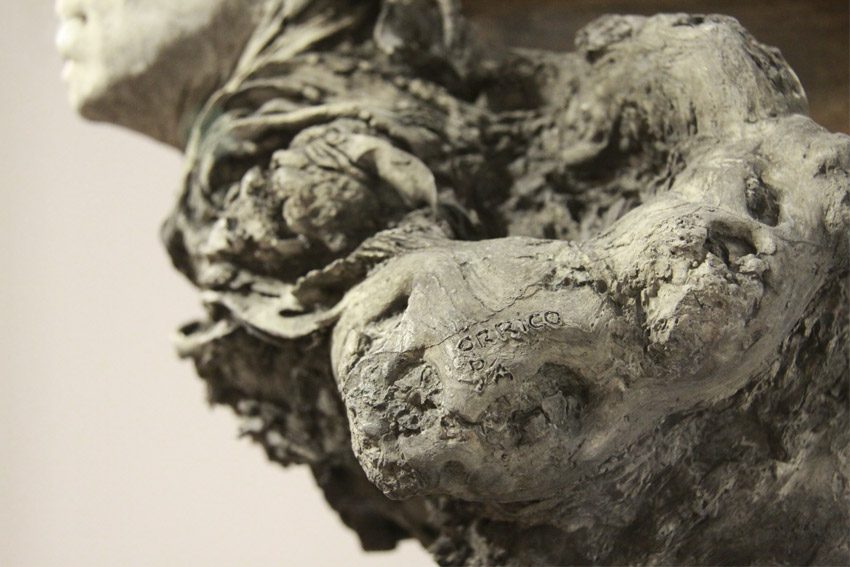 Baco, detail, Iron and Bronze, 80 x35 x 35cm
Baco, detail, Iron and Bronze, 80 x35 x 35cm
Can you explain briefly your doctoral thesis, in relationship to your current work. How do you get time to work both on your doctorate and your art practice?
My doctoral thesis is based on the search and experimentation with all kinds of materials applied to sculpture. Classic and contemporary materials adapted to new forms of production, where the materials are subjected to chemical and manual variations resulting novel processes that can be applied to the sculptural production. About the time, the first thing for me right now is my personal work. I take that processes performed to produce my work are closely linked to my doctoral thesis, which advances simultaneously.
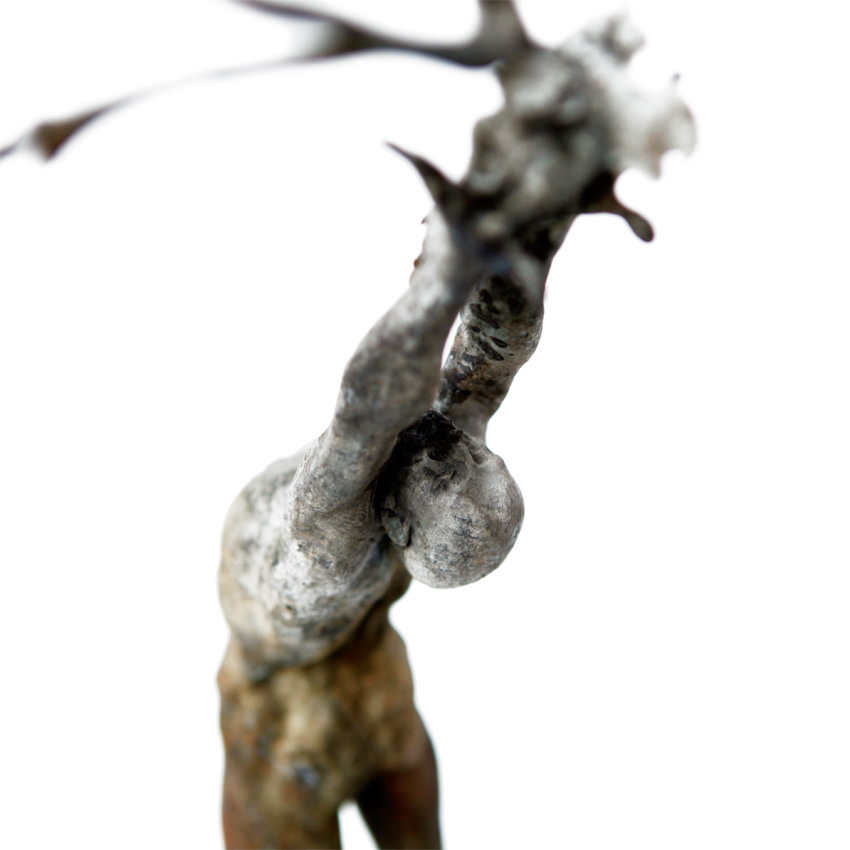 Rito, Bronze, 30 x 17 x 8cm
Rito, Bronze, 30 x 17 x 8cm
Discuss the studio space and the special needs you require for both stone and wood.
My workshop requires different separate spaces that are not contaminated with each other because the processes that took place in the production of my sculptures are sometimes incompatible to perform in the same room. Among other things, is essential a good ventilation, ample space to handle large sculptures, tools and appropriate machinery.
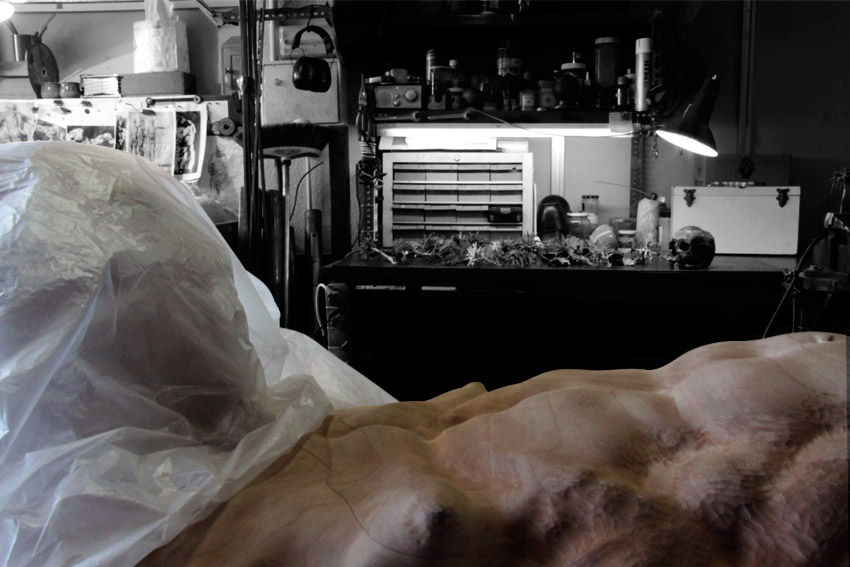 Contact details:
Contact details:
César Orrico
Website: www.cesarorrico.com
Email: info@cesarorrico.com
César Orrico. La Rioja, Spain
Interview by Deborah Blakeley, October, 2016
Think a colleague or friend could benefit from this interview?
Knowledge is one of the biggest assets in any business. So why not forward this on to your friends and colleagues so they too can start taking advantage of the insightful information the artist has given?
Other artists you may be interested in:


